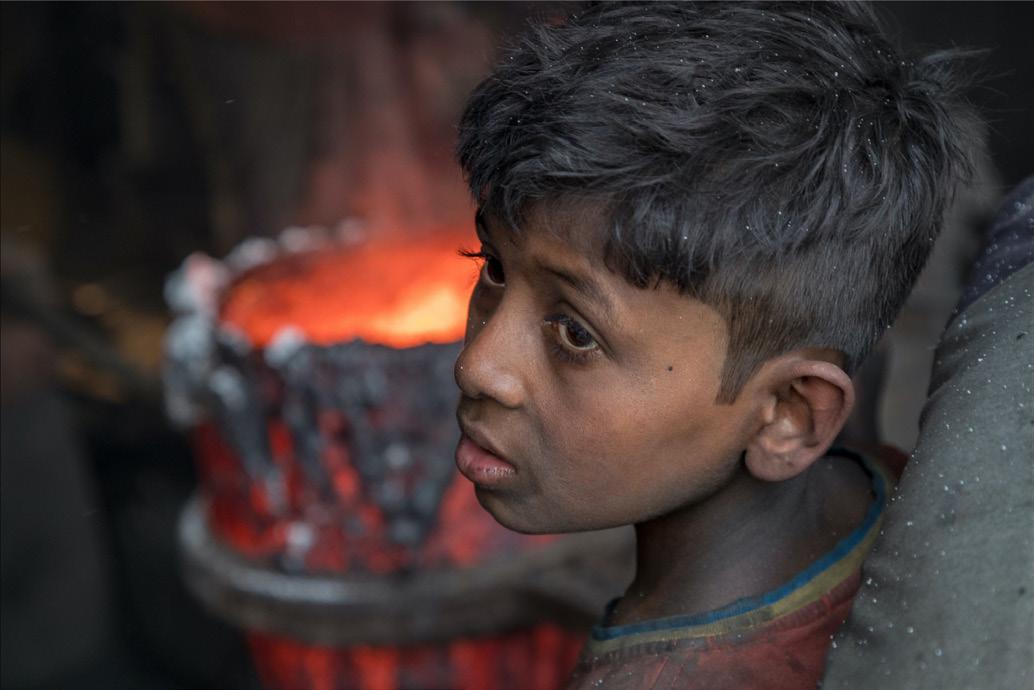
3 minute read
Steve Reynolds ARPS - Manual labour working conditions in Bangladesh - DPOTY 2019 Shortlist
Steve Reynolds ARPS - 'An illustration of the difficult manual labour working conditions in Bangladesh' - DPOTY 2019 Shortlist
RPS Documentary Photographer of the Year 2019
Advertisement
Child labour in Bangladesh is common, with 4.8 million or 12.6% of children aged 5 to 14 in the work force. Furthermore, an Overseas Development Institute survey found that 15% of six- to 14-year-olds living in poorest households work an average of 64 hours a week. Moreover, manual labour working conditions in a number of industries across Bangladesh are difficult and have very little safety procedures in place. And not just in the garment industries, but in other workplaces too, such as quarries, shipbuilding and heavy industry. This project focuses on the latter from the back streets of Dhaka, a tries to capture a sense of what working life is like for both young and old in this local, back street, factory.

Steve Reynolds ARPS

Steve Reynolds ARPS

Steve Reynolds ARPS

Steve Reynolds ARPS

Steve Reynolds ARPS

Steve Reynolds ARPS
On previous trips to India, doing street and festival photography, I’d seen the harsh conditions that people live in and endure. I had also seen Steve McCurry’s photographs of Bangladesh. So, when a trip with other photographers was advertised, I jumped at the opportunity. Most of my work has involved photographing people, whether portraits, travel and more recently documentary, so it was an ideal location for me.
In the future, I would like to do more documentary work and photojournalism, and have recently joined the ‘Photographers Without Borders’ network, but this isn’t part of a larger project for me.
The main message of this project is for viewers to see what is happening regarding adult and child labour in South East Asia (and probably other countries too). I know cultures can vary considerably but surely in the 21st century children, especially, should be spared these harsh conditions? The photographs I took near the shipyards show conditions that are also typical of the stone quarries and rubbish tips, where young children (maybe 4 or 5 years old) were working all day. There are no safety procedures and it felt like travelling back in time to Britain during the Industrial Revolution.
The most challenging aspect of the project was simply witnessing the harsh conditions while retaining focus and making sure that I captured something of the essence of the place to give a clear narrative for viewers. I made several trips over a two-week period but would like to go back and take longer as I am sure there are many more stories to tell.
I started travelling abroad from 2007 and typically initially visit a country, such as Morocco or Cuba, with a tour operator and then go back on my own the following year. As a Psychologist, my professional interest is in people, which is often mirrored in my photography, including portraiture, travel and documentary work. I am a member of Torbay Photographic Society and hold the Fellowship of the Irish Photographic Federation (FIPF), Associateship of the RPS (ARPS), the Gold Excellence Distinction with FIAP (EFIAP/g) and the Excellence Distinction with the PSA (EPSA). I am also a Fellow of the Royal Geographical Society (FRGS). I now live in Torquay. I finished third in the RPS Documentary Photographer of the Year 2017 with a series of festival images taken in India at Sonepur. I also have a website at www.steverimages.com.

Mark Phillips (Chair, RPS Documentary Group) presents Steve Reynolds with his DPOTY 2019 certificate
Dave Thorp










